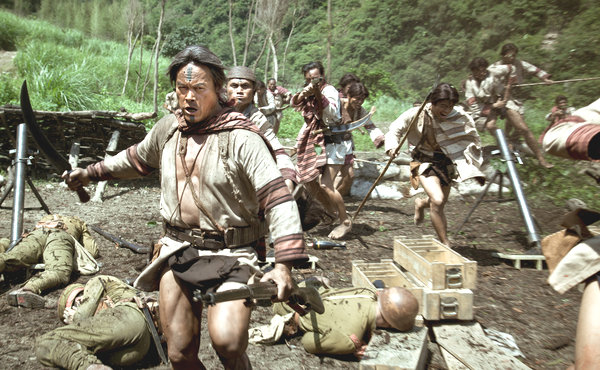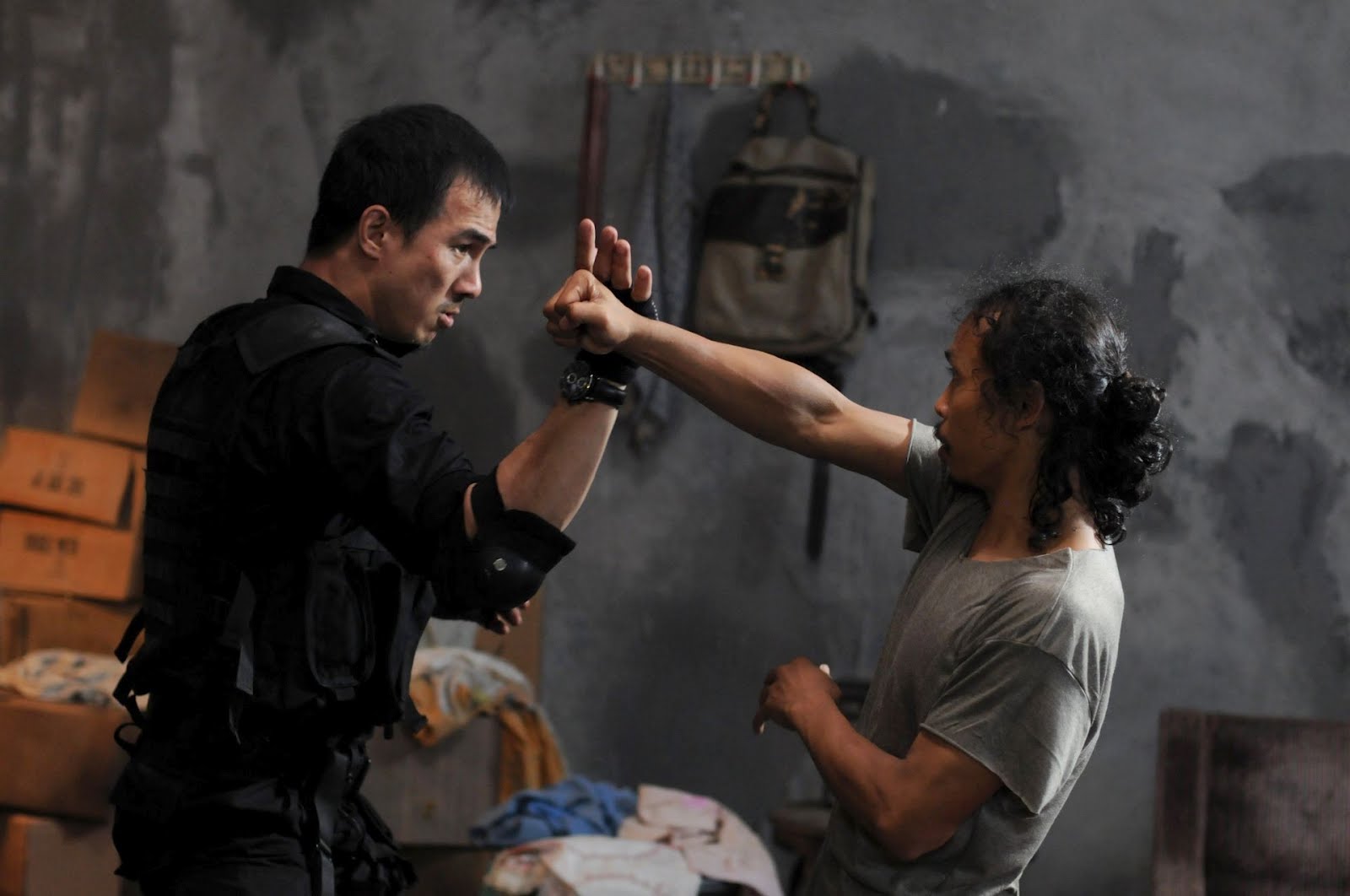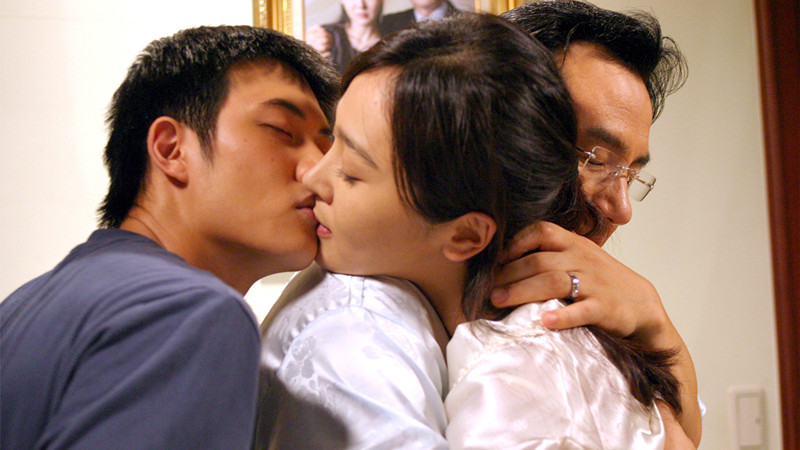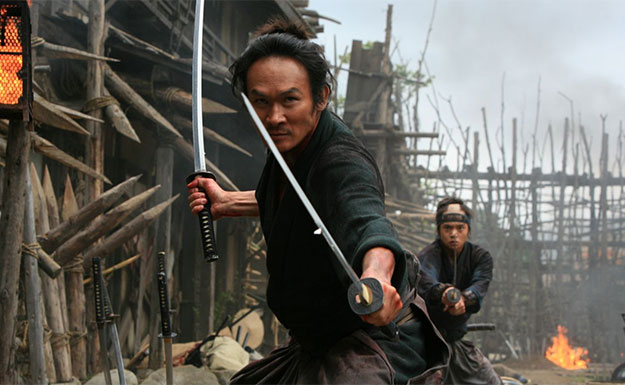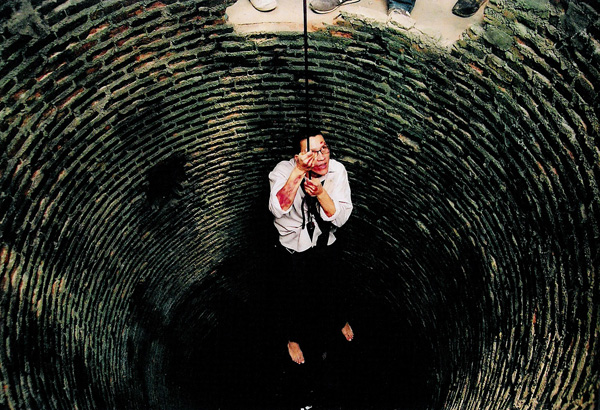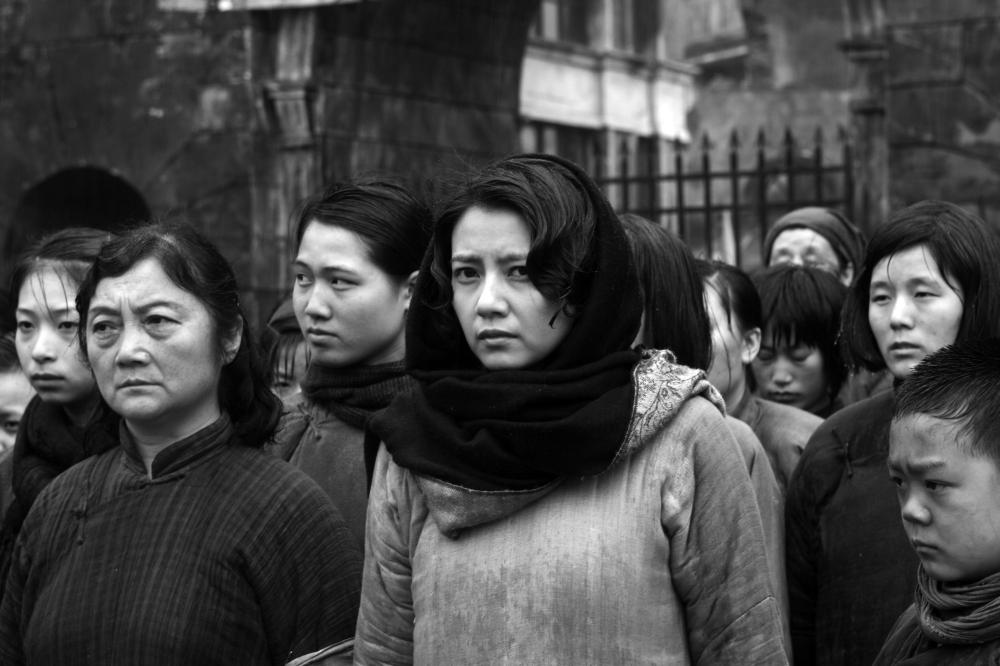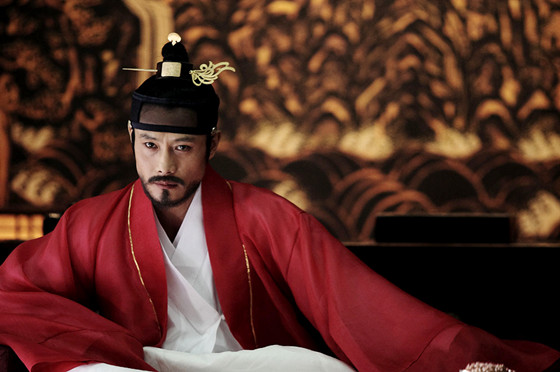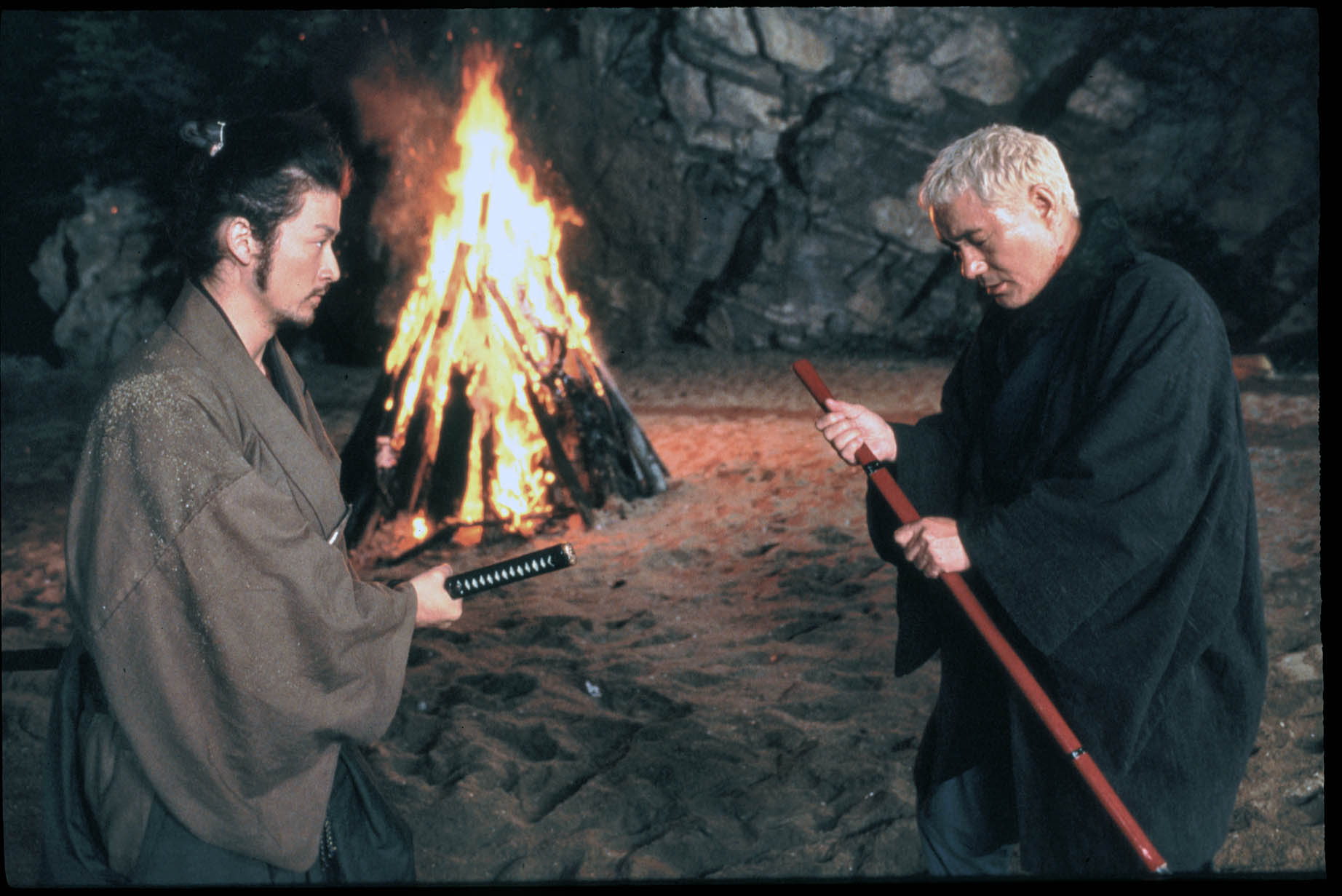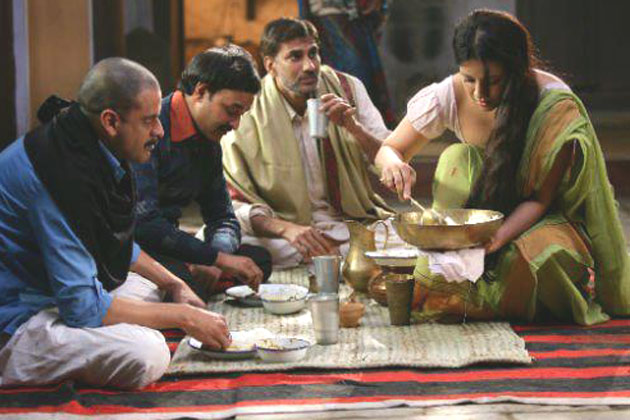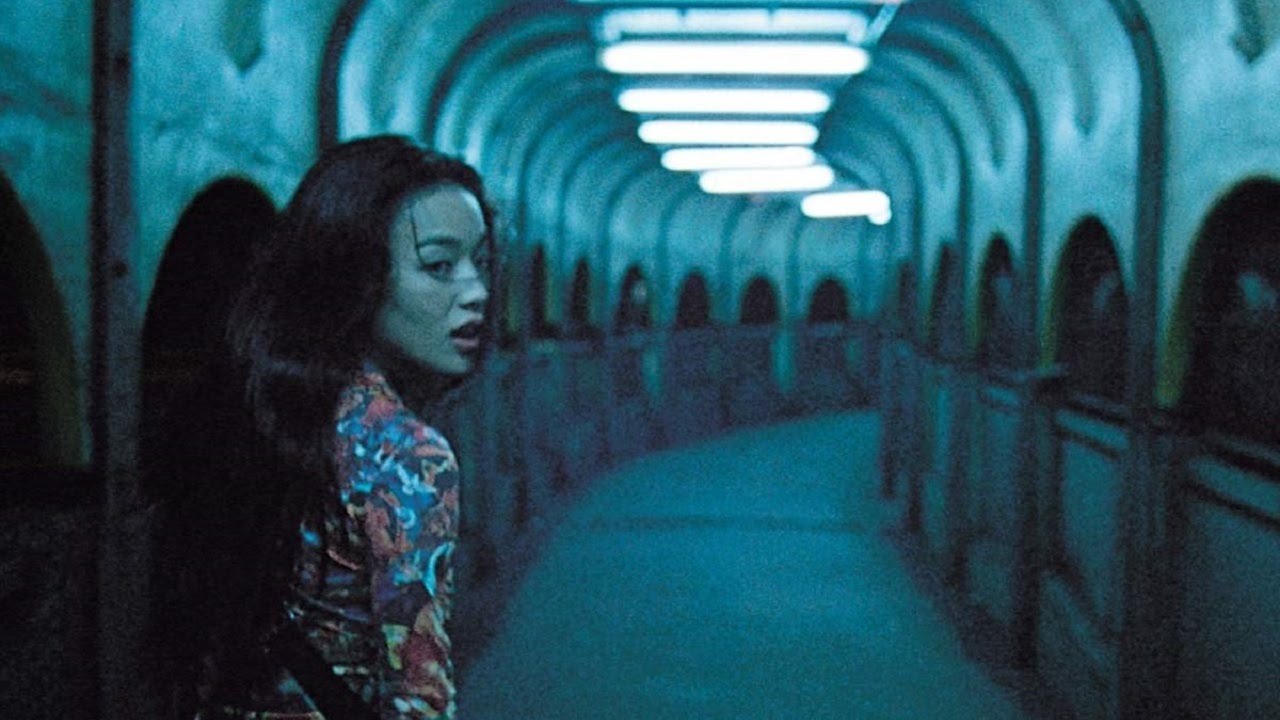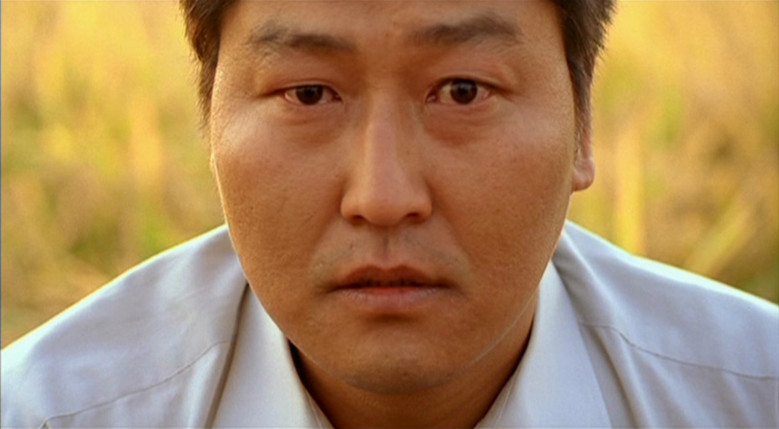
The progression of Asian cinema has become globally evident since the 90s and is now a widely acknowledged fact, with a plethora of productions screening in festivals around the world and gaining distribution in a constantly growing number of countries. The number of Hollywood remakes of Asian genre films also proves this, chiefly among them “The Departed” that netted four Oscars in 2007, including Best Picture and Best Director, and is largely based upon the Hong Kong movie “Infernal Affairs”.
The following list has been compiled with the purpose of including the foremost distinguished ones from as many directors, countries and genres as possible.
30. Warriors of the Rainbow: Seediq Bale (Te Sheng Wei, 2011, Taiwan)
Seediq Bale is a 4-hour epic based on historic facts that took the director 15 years to complete, and the most expensive production in the history of Taiwanese cinema.
The film focuses on Seediq, an indigenous tribe of Taiwanese Austronesian people that used to spend their lives hunting in the jungle and fighting among each other for their rights to hunting grounds. Although violent, the various clans lived in harmony with the nature, until the Japanese Occupation, which initiated in 1895.
The film starts a little before that year, where an adolescent Mona Rudao is exercising the aforementioned practices. However, in 1895 the Japanese Army attacks the indigenous folk, in order to enforce the occupation, changing their lives forever.
In 1930, the Seediq are in a state similar to enslavement, having to work arduously for little pay and spending their time getting drunk. Nevertheless, a number of the young ones revolt and with Mona Rudao as their leader, they stage an attack toward the Japanese living in Wushe. Their acts result in massive killings of the Japanese locals and subsequently, to the occupying forces staging war against them.
Te Sheng Wei wrote the script and directed his magnum opus, chiefly focusing on the realistic depiction of the natives and their customs. In that aspect, he chose local non-actors for the roles of the protagonists, with Da-Ching, who plays the young Mona Rudao, being a model, and Nolay Piho, who plays the elder, a local priest. One of his biggest achievements in this film is that he managed to extract excellent acting from these two.
Furthermore, in his quest for realism, he portrayed the Seediq with all their faults, since they are a sadistic, cunning and ruthless tribe, constantly ready to resort to violence. However, they are also heroic and absolutely selfless toward the common goal, including the women and children of the tribe.
29. The Raid: Redemption (Gareth Evans, 2011, Indonesia)
A special team of the Indonesian Anti-Terrorist Force, led by First Lieutenant Wahyu, Sergeant Jaka, and including the rookie Rama, arrives in a block of flats in the slums of Jakarta. Their mission is to arrest the owner of the building, Tama Riyadi, who is a notorious crime boss.
Their ascent up to the sixth floor seems to progress smoothly. However, at that point, a tenant notices their presence and sounds the alarm, seconds before the team kills him. Riyadi informs the residents regarding the raid, the majority of whom are hardcore criminals and armed to the teeth. Furthermore, he asks them to kill all of the police officers and promises to reward them with permanent stay, without any fees. Subsequently he unleashes his two henchmen, Andi and Mad Dog, upon the special team.
Gareth Evans is the definite master of the film, as he was responsible for the direction, the script, the editing and the overall production. As usual in the martial arts genre, both the direction and the script are present solely for providing a base for the action, and this particular movie is not an exception. However, the film entails a number of the most impressive and violent action scenes, and the choreography is sublime.
Responsible for the latter were Iko Uwais, who plays Rama, and Yayan Ruhian, who plays Mad Dog. The film introduced, aside from the aforementioned that are currently following an international career, the Indonesian martial art Pencak Silat. Iko Uwais was a champion of the style at the time. The final duel between the two and Andi is one of the greatest scenes of the genre.
28. 3-Iron (Kim Ki Duk, 2004, S. Korea)
Seemingly homeless, Tae Suk is an urban hermit who spends his life in apartments of people who are not present at the time. He eats from their refrigerator, takes selfies with their heirlooms, and pays for his stay by fixing broken apparatuses and washing their clothes. Eventually, he reaches Sun Hwa’s house thinking that it is empty, due to her husband being away on business. He initiates his routine, up to the point that he discovers her beaten. Subsequently, they decide to leave together and he introduces her to his peculiar way of life. Nevertheless, her husband is not eager to let her leave him.
Probably Ki Duk Kim’s easiest film to watch, chiefly because he had a large budget in his hands, which he implemented in “furbishing” the production, particularly in contrast to his previous ones that were utterly low-budget.
Nevertheless, the characteristics of his cinema are present, with scarce dialogue and the surreal last act, an element that meets its zenith in the two protagonists who hardly utter a word. Expectantly, a number of awkward scenes are present, although they are considerably fewer than usual.
The acting by the two leads, Lee Hyun Kyoon as Tae Suk and Lee Seung Yeon, is competent in its silence and Kwon Hyuk Ho is impressive as the evil husband.
The film was a huge success at the Venice Film Festival, netting four awards for Kim Ki Duk.
27. 13 Assassins (Takashi Miike, 2010, Japan)
In 2010 and 2011, the prolific filmmaker shot two remakes of the most distinct samurai films of the 60s, “13 Assassins” and “Harakiri”, both of which are amongst his foremost accomplished and celebrated works. “13 Assassins” netted him the Best Director Award from the Nikkan Sports competition, amongst a plethora of other local and international awards.
In Japan in 1830, young lord Matsudaira Naritsugu acts in an exceedingly violent fashion, murdering infants, raping and mutilating women, and killing citizens without any apparent reason. However, he is protected because he is the son of the previous shogun and a brother to the current. An elderly lord, Doi Tashitsura, assigns a trustworthy samurai, Shimada Shinzaemon, to organize Naritsugu’s murder.
Subsequently, Shinzaemon enlists 10 additional samurai and his nephew, Shimada Shirokuro; altogether, they scheme to ambush Eiichi and his 70 soldiers on their return from Edo. On their journey, they meet a hunter, Kiga Koyata, who becomes the 13th assassin.
Miike took the former film and added violence, blood and slapstick humor (the scene with the mayor is preposterously hilarious), thus transforming it into his own, unique style. The movie is split into two parts: the initial one has almost no action, apart from Naritsugu’s violent acts that are shot in Miike’s typically extreme fashion; the second is filled with impressive battle scenes, where the large budget of the film becomes obvious.
Koji Yakusho is wonderful as always in the role of Shimada Shinzaemon, despite the fact that he acts in the fashion of the protagonists of the samurai films of the 60s, with grandiloquence and intense theatricality.
26. 13:Game of Death (Chookiat Sakveerakul, 2006, Thailand)
Based on a one-shot comic titled “13th Quiz Show” by Eakasit Thairaat, the film tells the tale of Phuchit Puengnathong, a music instrument salesman who has the worst day of his life. During a visit to a potential client, he discovers that a colleague has already closed the deal behind his back, and upon his return to his car he finds out that the police has seized it.
Furthermore, when he arrives at his office, his boss calls him and forces him to sign his resignation in order to receive a letter of recommendation. Subsequently, his mother calls him and asks for money for his sister.
Moreover, Phuchit has overcharged his credit cards and his girlfriend, who recently became a famous singer, has abandoned him. Drowned in despair, he sits in the stairwell of his building to smoke a cigarette when something unexpected occurs. A girl calls him on the phone and seems to know everything concerning him, including what he is doing at that moment. She asks him to participate in a game, where his first task would be to kill a fly with the newspaper he is holding, and upon completion, his account will be credited with 10000 baht.
Chookiat Sakveerakul was only 25 when he wrote and directed this film. However, he managed to create an astonishing movie that moves with extremely rapid pace and combines artfully elements of thriller, horror and action, even incorporating a number of darkly humorous moments. The question he presents is quite evident: How far can a man reach in order to earn money?
Κrissada Terence is staggering in the leading role, presenting a variety of feelings and states in an utterly competent fashion.
25. City of Life And Death (Chuan Lu, 2009, China)
Based on the much-disputed facts that occurred during the Japanese occupation of Nanjing, this particular movie is a triumph of realism.
The film largely revolves around the various incidents that took place before and during the occupation, rather than around specific characters. In that fashion, it initiates with First Lieutenant Lu Jianxong, along with his comrades, trying to stop a number of Chinese soldiers that abandon the city, to no effect. Subsequently, Lu and Shounji, and a number of other soldiers and civilians, including a boy named Xiaodouzi, fight the Japanese forces. However, their resistance does not last for long, and those who are not killed are taken as prisoners.
The film then focuses on the Japanese atrocities towards the prisoners and the people inside the DMZ Zone, where John Rabe, a German, is in charge along with other westerners.
Chuan Lu’s main concern is to present the facts as realistically as possible, and his crew manufactured identical copies of the various districts of the city and its walls. Furthermore, he based the incidents described on actual records of people present, including ones from Japanese soldiers’ diaries.
Technically, this black and white film is shot in a style similar to one of documentaries. Additionally, Chuan Lu did not want to film solely the heinous scenes, in order to demonize the Japanese, but tried to present the reasons that led them to such acts. Thus, he presented the film through the eyes of both of the rivals.
24. Masquerade (Choo Chang Min, 2012, S. Korea)
One of the most successful films of all time in South Korea and widely acknowledged as the finest Joseon costume drama, “Masquerade” is currently the sixth film on the all-time list with the biggest admissions, and monopolized the 49th Grand Bell Awards, winning in 15 categories.
Based on the life of King Gwanghae, who ruled from 1574 until 1641, it revolves around the adventures of a comedian, Ha Seon, who is recruited to act as the king’s double, due to the latter’s fear of an assassination attempt against him. The practice seems to work until the actual king is poisoned. With him in seclusion, and in order to convalesce in safety, Ha Seon begins to pretend he is the actual king. The masterminds behind the plan are the Chief Secretary and the Chief Eunuch, who struggle to teach him how to act in a royal fashion, with tragicomical consequences.
Choo Chang Min’s chief achievement in “Masquerade” is that he managed to incorporate humor in such a serious theme, which resulted in a rather entertaining depiction of political matters of the 17th century. Additionally, his characters, particularly the king and his double, are sublimely depicted, with the rest providing enough quality to make “Masquerade” the greatest film of its category.
Lee Byung Hun is the undisputed star of the film, in a double role, portraying two rather different characters with equal success.
23. The Blind Swordsman: Zatoichi (Takeshi Kitano, 2003, Japan)
Zatoichi is a blind wanderer in 19th century Japan, who earns his living with chiropractics and by winning at dice games. However, behind his humble appearance hides an undefeated sword expert. Eventually he reaches a secluded village, whose citizens are under the authority of the local criminal gang. Zatoichi also meets two geishas on the path of revenge and faces an adept rival.
Takeshi Kitano reinvigorated the folk hero Zatoichi, exclusively played up to that point by Shintaro Katsu, by incorporating a number of technical and artistic elements. In that aspect, Kitano’s Zatoichi has blond hair, is humorous and laughs a lot. The film has sarcastic scenes of parody, peculiar music resulting by the environment itself, and a delightful dancing scene in the finale. Furthermore, the bloodbaths are quite frequent and the duels impressive, namely the final one.
Kitano is sublime in the leading role and Tadanobu Asano, as his rival, is equally impressive. Zatoichi netted four awards from the Venice Film Festival, including the Silver Lion for Best Director, among a plethora of others, local and international.
22. Gangs of Wasseypur (Anurag Kashyap, 2012, India)
This particular film, that runs over 5 hours, tells the story of a feud between the families of Sultan and Shahid Khan, which spanned over three generations.
Anurag Kashyap, who directed, co-wrote and produced the movie, presents through his cruel images and unconventional storytelling the Indian version of “The Godfather”, where the protagonists are petty criminals of the local underworld trying primarily to survive and subsequently ascend the hierarchy of Indian society.
One of his impressive achievements is the depiction of the protagonist’s two wives, their relationships with him and between them, and their role in the story, where both of them face their destiny filled with hatred and despair.
Of equal competence is the humor in the film, chiefly resulting from Kashyap’s alternative presentation of the cinematic love story, where the Bollywood romance is deconstructed in order to reassemble as something tragicomical. The aforementioned tactic is evident in a hilarious scene where Faizal Khan meets his loved one for the first time.
21. Millennium Mambo (Hou Hsiao Hsen, 2001, Taiwan)
Vicky has recently moved from Keelung to Taipei, where she works doing PR for a nightclub. She has an overly jealous boyfriend, Hao Hao, who tracks her every move, including her bank accounts, her telephone bills, even her smell. Her days pass by working, taking drugs and constantly fighting with him, at least when they aren’t not having sex.
However, she is tired of her situation and finds solace in Jack, a kind-hearted gangster who also owns a bar. Gradually she gets increasingly comfortable with him, while he is in serious trouble due to his tendency to offer assistance to whoever needs it.
The film stands apart from Hsien’s previous filmography, equally in themes and technique. For the first time he examined the lives of young individuals in contemporary Taiwanese society, while the undertone of melancholy and the discontent inside a relationship are reminiscent of Wong Kar Wai’s works.
Furthermore, his usual long, static shots have been replaced by a closer glance on the protagonists. All of the above probably resulted from his collaboration with cinematographer Lee Ping Bin, who previously worked in Wong Kar Wai’s “In the Mood for Love”. Nevertheless, a number of his characteristics remained in the film, mainly the fact that he presents these through his distinct calmness.
Lastly, the film initiated his collaboration with Shu Qi, who accompanied him through the majority of his following works.
